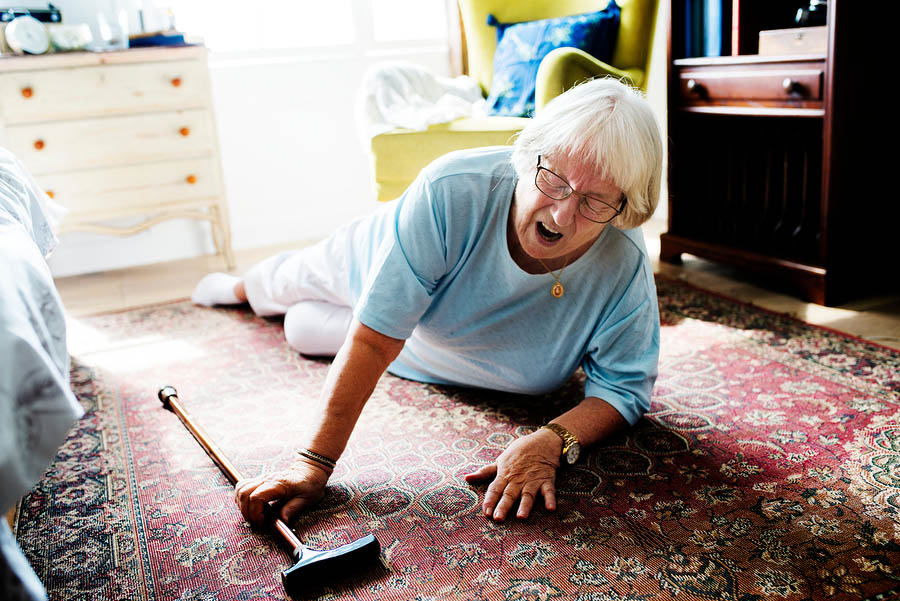How Can an Older Person Get Up Off the Floor After a Fall?
Category:

Every year, about one quarter of adults over 65 will suffer a fall. It’s no secret that falling can be dangerous, especially for the elderly. But even falls that don’t cause an immediate injury can end badly if you don’t know how to react.
Of course, it’s not uncommon for seniors to find themselves unable to get up. It might be due to injury, stiff joints, weak muscles, or a number of other factors. But in any case, knowing what to do after a fall is just as important as learning how to get up safely.
How to Fall Safely
It’s often a good idea to practice getting up from a fall, too. Try practicing in different rooms, allowing you to consider different scenarios. You might learn that one room is too remote to call for help, or another lacks sturdy objects to help you stand. In the interests of safety, it doesn’t hurt to have someone around during this practice.
Teaching the elderly how to fall can help as well. Because for most people, our natural instinct while falling is to become stiff and rigid. But doing so can increase the force of the impact and can lead to broken bones. It’s much safer to fall with bent knees and elbows. And no matter where you’re falling, try to land on muscle rather than bone.
How to Get Up from a Fall
How you get up after a fall can be just as important as how you fell. For an elderly person who’s getting up independently, the first step is checking for injuries. If you’re not hurt, then you can try to get up. If you’re hurt or unable to get up, it’s time to call for help. An injured person moving will only increase the risk of further injury.
How can an older person get up off the floor safely? The process is rather simple. Start by rolling from your side to your stomach. Slowly pull yourself up to your hands and knees. From there, crawl towards a sturdy object, like a chair. Sturdiness is important because that object can help support your body weight.
Placing your weight on your hands, slide one foot forward until it’s flat against the ground, while keeping your other knee against the floor. From a sitting position, with both your arms and legs pushing upwards, rise from the floor. And take your time; rushing will only increase the risk of injury.
Helping the Elderly Get Up After a Fall
When helping someone up after a fall, it’s just as important to exercise caution. If you pick up someone incorrectly after a fall, you’ll only place yourself and the person who has fallen at risk. Moving someone incorrectly after a fall can be more damaging than the fall itself.
The process is very similar to getting up from the floor after a fall by yourself. First, look for signs of injury. With only minor injuries, you can proceed to help the person who has fallen to get up slowly. However, your role isn’t to lift their weight, but to help keep them steady. You can also provide towels, pillows, or other comforts for their joints.
What to Do After a Fall
If you’re unable to get up, the first thing to do is seek help. The second thing is to find a warm location because people who fall may also be at risk of hypothermia. Reach for a blanket, clothing, or nearby covering to help keep warm. Even if heat isn’t a concern, it’s still a good idea to keep moving. Staying in one spot can lead the body to become stiff and sore, and cause skin damage.
Though falls are fairly common, it’s just as common for people not to tell their doctor about these incidents. Sometimes, there are underlying causes that could be addressed with treatment or correction, so it’s best to keep your care provider in the loop. It may also help to learn more about preventing falls because older adults who’ve fallen once are at greater risk of falling again in the future.
Subscribe
Date: 2019-08-20
Category:

